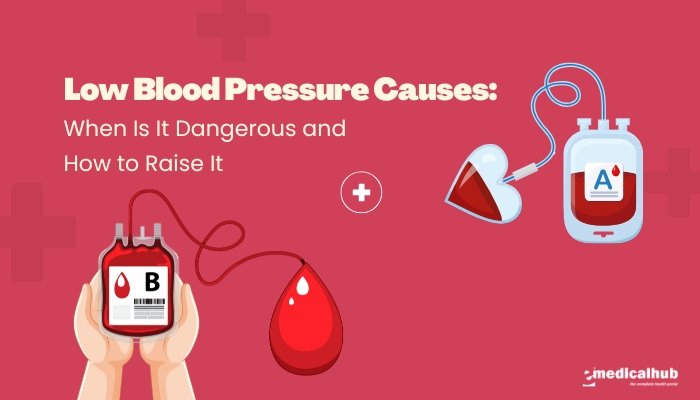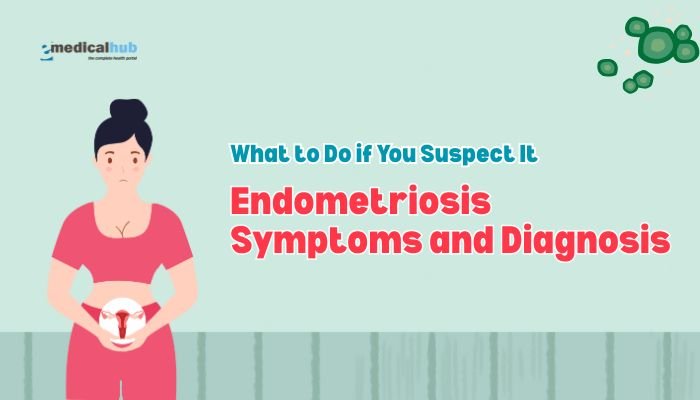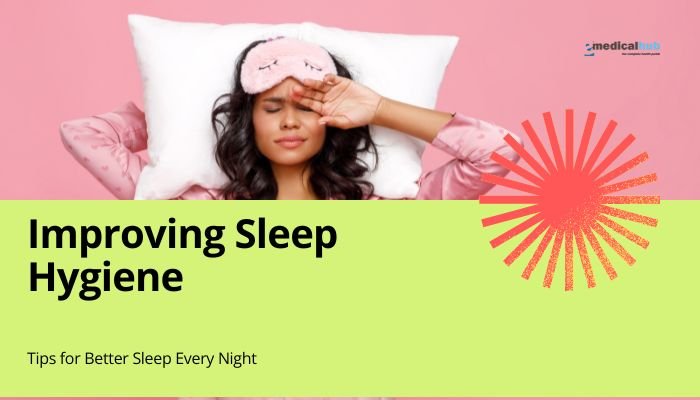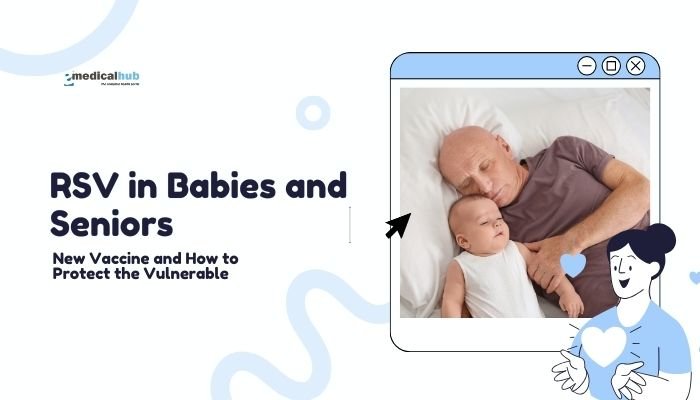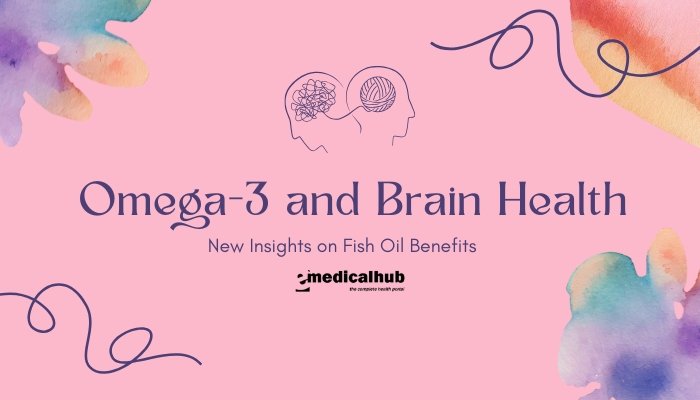Introduction
Low blood pressure, known medically as hypotension, typically refers to a systolic reading (the top number) below 90 millimeters of mercury (mmHg) or a diastolic reading (the bottom number) below 60 mmHg.
For most people, lower blood pressure is a positive indicator of cardiovascular health and carries a reduced risk of heart attacks and strokes compared to higher levels. However, excessively low blood pressure can cause symptoms such as dizziness, fainting, and even organ damage in severe cases.
This article explores the main causes of low blood pressure, the circumstances in which it becomes dangerous, and practical ways to stabilize or raise it when necessary. Using bullet points, subheadings, and accessible language, the article provides a roadmap for individuals looking to understand hypotension and manage it effectively.
The content covers lifestyle factors, medical conditions, and other triggers that can drop blood pressure levels, along with tips for mitigating symptoms and ensuring overall circulatory health.
Understanding Blood Pressure
Blood pressure is the force exerted by circulating blood against the walls of arteries. It is measured using two numbers:
- Systolic Pressure (the top number)
The pressure in the arteries when the heart contracts and pumps blood. - Diastolic Pressure (the bottom number)
The pressure in the arteries when the heart relaxes between beats
These numbers are measured in millimeters of mercury (mmHg), e.g., 120/80 mmHg. Generally, a normal range for adults is around 120/80 mmHg, though individual variations are common. If systolic drops below 90 mmHg or diastolic dips below 60 mmHg, it is typically classified as hypotension.
Types of Low Blood Pressure
Low blood pressure can manifest in different contexts, each with distinct causes:
- Orthostatic (Postural) Hypotension
This happens when blood pressure falls significantly upon standing from a sitting or lying position. It occurs due to impaired blood vessel constriction or dehydration. - Postprandial Hypotension
Blood pressure drops after a meal, as blood diverts to aid digestion, and certain autonomic regulations in older or sensitive individuals fail to compensate. - Neurally Mediated Hypotension
Triggered by faulty brain signals, the body fails to adjust vascular tone in response to certain stresses, such as standing for long periods or being in hot weather. - Chronic Hypotension
Some people have persistently low readings due to genetics or overall excellent cardiovascular fitness, without harmful effects. - Severe (Acute) Hypotension
A sudden drop in blood pressure that can lead to shock and organ damage. Often occurs due to infection (septic shock), blood loss, allergic reactions, or heart failure.
The health impact of hypotension varies widely depending on the underlying type and cause. In many situations, particularly if no symptoms arise, lower readings can be benign or even beneficial.
When Is Low Blood Pressure Dangerous?
Although there is no strict cutoff where low becomes dangerous, hypotension can be risky if it produces symptoms or is a result of an underlying medical issue. Major concerns include:
- Reduced Organ Perfusion
If blood pressure stays too low, organs do not receive enough oxygen-rich blood. This can harm the brain, kidneys, and other vital organs. - Dizziness or Fainting (Syncope)
A drop in blood pressure can cause a temporary shortage of blood flow to the brain, leading to lightheadedness and possible falls. - Shock
Extremely low blood pressure leads to shock, a life-threatening state characterized by cold skin, confusion, rapid breathing, and weak pulse. - Accidents and Injuries
If dizziness or fainting occurs while operating machinery or driving, serious injury can result.
If an individual’s blood pressure dips below 90/60 mmHg with notable symptoms like fatigue, blurred vision, or confusion, medical consultation is recommended.
Common Causes of Low Blood Pressure
Dehydration
Insufficient fluid intake or excessive fluid loss (through sweating, vomiting, diarrhea) reduces blood volume. With less circulating volume, pressure on artery walls declines.
- Symptoms: Thirst, dry mouth, reduced urination, fatigue.
- Risk Situations: Hot climates, strenuous exercise without proper fluid replacement, illnesses causing fluid loss.
Blood Loss or Anemia
Significant blood loss, whether sudden or gradual, lowers circulating volume. Chronic blood loss (e.g., from gastrointestinal bleeds or heavy menstruation) may cause mild hypotension over time.
- Signs of Blood Loss: Pale skin, rapid heartbeat, dizziness, fainting.
- Anemia: Reduced hemoglobin can limit oxygen supply, sometimes leading to lower blood pressure and fatigue.
Heart Problems
A weakened heart cannot pump blood effectively, reducing arterial pressure. Conditions include:
- Bradycardia (Slow Heart Rate): Heart pumps less frequently, limiting blood flow.
- Arrhythmias: Irregular rhythms disrupt consistent pumping.
- Heart Failure: The heart’s pumping function declines.
- Valve Disorders: Impaired valves hamper blood ejection from the heart.
Endocrine Disorders
Hormones regulate blood volume and vessel tone. If they are out of balance, pressure can fall.
- Hypothyroidism or Adrenal Insufficiency (Addison’s Disease) can cause consistent low pressure.
- Diabetes can cause nerve damage affecting vascular tone or excessive urination leading to dehydration.
Medications
Certain drugs lower blood pressure as a side effect or intended function:
- Diuretics: Increase urination, reducing blood volume.
- Beta-Blockers: Slow heart rate and weaken contractions, lowering pressure.
- Alpha-Blockers: Relax blood vessels, decreasing arterial tension.
- Antidepressants or Parkinson’s Medications: Some can reduce vascular constriction.
Severe Infections or Allergic Reactions
Septic shock from an infection or anaphylaxis from an allergen can produce abrupt, dangerous drops in blood pressure.
- Sepsis: Widespread inflammation dilates blood vessels, lowering pressure drastically.
- Anaphylaxis: Extreme allergic response can cause vasodilation and fluid leakage.
Nutritional Deficiencies
A lack of B vitamins (B12, folate) or iron can cause anemia, impacting blood pressure. Similarly, low salt intake, while beneficial for many with high blood pressure, can occasionally result in hypotension in susceptible individuals.
Neurological Conditions
Disorders like Parkinson’s disease or multiple system atrophy may impair autonomic nervous system control of heart rate and vascular tone, leading to persistent orthostatic hypotension.
Signs and Symptoms of Low Blood Pressure
While hypotension is sometimes asymptomatic, signs can appear if the body fails to maintain adequate blood flow:
- Dizziness or Lightheadedness: Common upon standing or sudden posture changes.
- Fainting (Syncope): Temporary loss of consciousness if the brain’s blood supply is insufficient.
- Blurred Vision: Reduced blood flow to eye structures causes temporary visual disturbances.
- Nausea: Often paired with dizziness, especially if blood flow to digestive organs is affected.
- Fatigue or Weakness: Overall low perfusion can make daily tasks exhausting.
- Confusion or Difficulty Concentrating: The brain is sensitive to oxygen drops.
- Cold, Clammy Skin: In more severe drops, peripheral vasoconstriction keeps blood for vital organs, leaving extremities cool.
Diagnosis of Low Blood Pressure
A healthcare provider typically starts with measuring blood pressure using a cuff. If a pattern of low readings arises, further evaluations may include:
- Medical History & Examination
Questions about symptoms, medication use, dietary habits, and family history help pinpoint cause and risk level. - Postural Vital Signs
Measurements of pulse and blood pressure while lying, then standing after 1–3 minutes, can confirm orthostatic hypotension. - ECG (Electrocardiogram)
Identifies slow or irregular heartbeats, conduction blocks, or arrhythmias. - Echocardiogram
Imaging to see heart structures and pumping efficiency if cardiac causes are suspected. - Blood Tests
Evaluations of hemoglobin (for anemia), electrolytes, kidney function, and hormone levels (thyroid, adrenal) as needed. - Tilt Table Test
Used to diagnose neurally mediated hypotension. The patient is strapped to a table that shifts from horizontal to vertical, monitoring blood pressure and heart rate responses. - Ambulatory Blood Pressure Monitoring
A wearable device tracks pressure throughout daily activities if patterns or triggers for drops are unclear.
Careful diagnosis ensures that treatment focuses on the specific cause—like adjusting medication, boosting fluid intake, or treating underlying disease.
When to Seek Medical Help
While benign in many cases, hypotension that leads to recurring or severe symptoms calls for professional evaluation. Consult a doctor if:
- Lightheadedness or fainting happens frequently.
- There are new or worsening episodes of confusion, blurred vision, or chest pain.
- Symptoms appear alongside severe infection, high fever, or allergic reactions.
- A known heart condition coexists with hypotension.
- A medication change correlates with dizziness or extreme fatigue.
Early assessment can prevent injury from falls and detect potential chronic issues or acute emergencies.
How to Raise Low Blood Pressure
Increase Fluid and Salt Intake
- Adequate Hydration: Drinking water consistently through the day helps maintain blood volume. Aim for at least 2–3 liters daily unless restricted by a medical condition.
- Electrolytes: Sports drinks or oral rehydration solutions can help if you lose fluids (exercise, diarrhea, vomiting).
- Sufficient Salt (Sodium): An uptick in sodium can be beneficial for those with hypotension, but check with a healthcare provider if you also have kidney or heart concerns.
Eat Smaller, More Frequent Meals
Large meals can divert blood to the digestive tract, lowering overall pressure. Smaller meals spaced throughout the day keep postprandial drops at bay. Favor balanced combinations of protein, complex carbs, and healthy fats.
Avoid Quick Position Changes
Getting up too quickly can intensify dizziness or fainting.
- Rise Gradually: Sit on the edge of the bed for a moment before standing.
- Flex Leg Muscles: Contract calf or thigh muscles when shifting positions to push blood upwards.
Wear Compression Stockings
Elastic stockings or abdominal binders reduce blood pooling in the legs and abdomen, sustaining higher central blood pressure. They can be particularly helpful in orthostatic hypotension.
Exercise Regularly
Moderate exercise boosts cardiovascular fitness and vascular tone, helping regulate blood pressure. However, individuals prone to orthostatic drops should choose safe activities (e.g., recumbent bikes, swimming) to minimize fainting risk.
- Strength Training: Supports muscles that help venous return.
- Aerobics: Enhances overall heart-lung function.
- Avoid Overheating: Hot yoga or steam rooms might worsen hypotension.
Manage Stress
Chronic stress can disrupt autonomic balance, though typically raising blood pressure in most. Certain forms of stress or anxiety might cause momentary hypotension in others.
- Techniques: Deep breathing, mindfulness, guided relaxation.
- Lifestyle: Adequate sleep, daily unwinding practices, counseling if persistent anxiety is a factor.
Limit Alcohol
Alcohol dilates blood vessels and promotes fluid loss via diuretic effects, promoting lower blood pressure and dehydration. Consumption in moderation or avoiding altogether can reduce hypotensive episodes.
Adjust Medications Under Guidance
If you suspect a prescription or over-the-counter drug is causing low blood pressure, speak with your healthcare professional. They may reduce dosage, switch to an alternative, or time medication differently to minimize drops.
Pharmacological Interventions
Certain cases demand medication specifically to raise blood pressure:
- Fludrocortisone: A synthetic hormone that aids sodium (and thus water) retention.
- Midodrine: Constricts blood vessels, elevating pressure.
- Droxidopa: Can boost levels of norepinephrine, improving vascular tone.
However, these are usually reserved for chronic, symptomatic hypotension unresponsive to simpler measures.
Tips for Daily Life
Minor changes in routines can markedly improve blood pressure stability:
- Hydrate Early: Start the day with a glass of water before rising from bed.
- Elevate Head of Bed: Slightly raising the head of the bed can help orthostatic regulation.
- Limit Prolonged Standing: Use movement breaks, shift weight from one foot to the other, or clench calves.
- Track Blood Pressure: Home blood pressure monitors allow checking trends before and after changes (e.g., after meals, standing up).
- Check Posture: Maintain upright but relaxed posture—slouching can worsen symptoms.
Table: High-Risk vs. Low-Risk Hypotension Factors
| Factor | High-Risk Hypotension | Low-Risk/Benign Hypotension |
| Blood Pressure Readings | Marked drop below 90/60 mmHg with symptoms | Readings around 90–100/60 mmHg but stable over time |
| Accompanying Conditions | Heart failure, severe infections, internal bleeding, endocrine disorders | Generally healthy individual with no major medical issues |
| Symptoms | Frequent dizziness, fainting, chest pain, confusion | Occasional mild lightheadedness, or none at all |
| Cause | Could be medication-related, acute trauma, shock | Genetic predisposition, good cardiovascular fitness |
| Prognosis | Potentially life-threatening if untreated | Often manageable with lifestyle modifications, often no danger |
Special Populations
Older Adults
Elderly individuals often experience orthostatic hypotension due to reduced vascular elasticity and decreased thirst response. They are more prone to dehydration, medication side effects, and chronic conditions. Careful monitoring, slow posture changes, and consistent hydration are key.
Pregnant Women
Blood pressure can drop in the first and second trimesters, sometimes causing dizziness. Though mild hypotension is typically normal in pregnancy, severe cases should be evaluated to rule out complications. The expanding blood volume and hormonal changes usually cause blood vessels to relax.
Athletes
Endurance athletes, especially runners and cyclists, often have lower resting heart rates and blood pressure due to high cardiovascular efficiency. If they experience no discomfort, it is generally harmless. Proper electrolyte balance is crucial to prevent performance or recovery issues.
Patients with Chronic Diseases
Conditions like diabetes (with possible autonomic neuropathy) or Addison’s disease require specialized management. Fluctuations in medication or disease states can swing blood pressure in either direction. Collaboration with endocrinologists or other specialists is vital.
Frequently Asked Questions
- Is it better to have low blood pressure than high blood pressure?
In general, moderate or slightly low pressure is considered healthy. However, extremely low readings that cause symptoms or reflect an underlying illness are problematic. - Can stress cause low blood pressure instead of high blood pressure?
Most commonly, stress elevates blood pressure, but certain individuals can experience vasovagal responses that lead to sudden drops. Chronic anxiety may also cause overactivation of certain nervous system pathways that momentarily reduce pressure. - Does salt intake help raise low blood pressure?
Yes, increasing sodium can help some individuals maintain higher pressure. Nevertheless, consult a doctor, especially if you have kidney or heart conditions, as excess salt may be harmful in other ways. - What is the fastest way to relieve dizziness if I feel faint?
Lie or sit down, placing your head between your knees if possible. Drink water, loosen tight clothing, and ensure adequate ventilation. If symptoms persist, seek medical attention. - How does caffeine influence low blood pressure?
Caffeine can cause temporary constriction of blood vessels, mildly raising blood pressure. However, tolerance builds over time, and excessive caffeine intake can lead to dehydration or other issues. - When do I need medication for low blood pressure?
Medications are reserved for chronic or severe cases that do not respond to lifestyle adjustments or that stem from underlying conditions requiring specific treatment.
Myth vs. Fact
- Myth: If your blood pressure is below 120/80, you must be unhealthy.
Fact: Many people have readings consistently around 90/60 without issues—some are physiologically normal, especially if asymptomatic. - Myth: Only older adults get low blood pressure.
Fact: While orthostatic hypotension is more common in seniors, low blood pressure can affect anyone, from athletes to those with endocrine imbalances. - Myth: Drinking large amounts of coffee is the best way to fix low blood pressure.
Fact: Caffeine’s effect is short-lived, and excessive intake can cause other problems. Balanced hydration and addressing root causes is more effective. - Myth: Dizziness always means low blood pressure.
Fact: Dizziness can result from ear infections, low blood sugar, medication side effects, or anxiety. A thorough check is needed for accurate diagnosis.
Example Case
Maria’s Story:
Maria, a 38-year-old office worker, notices episodes of lightheadedness and fatigue mid-morning. She checks her blood pressure at a local pharmacy and sees it is 88/58 mmHg. Concerned, she visits her doctor, who suspects mild chronic hypotension aggravated by inadequate hydration and skipping breakfast. After adopting a routine of drinking two liters of water daily, adding a small morning snack, and rising more slowly from her desk, her symptoms lessen dramatically. Her doctor confirms no other underlying heart or endocrine issues.
Lesson Learned: Minor lifestyle tweaks can effectively manage mild hypotension in otherwise healthy individuals.
Strategies for Sustainable Management
- Hydration and Balanced Diet: Emphasize water, fruits, vegetables, whole grains, adequate protein, and moderate salt.
- Gradual Activity: Build an exercise routine step by step, combining light cardio with strength exercises.
- Monitor Progress: A home blood pressure kit or periodic checks keep track of any changes.
- Open Communication: Discuss possible medication side effects or adjustments with healthcare providers.
- Emergency Readiness: If prone to fainting, carrying quick-acting items like electrolyte packets or wearing a medical ID bracelet can help if an episode occurs in public.
Conclusion
Low blood pressure can be a sign of robust cardiovascular health or a source of uncomfortable symptoms and potential danger. Determining whether hypotension is benign or warrants intervention hinges on context, coexisting conditions, and symptom presence. Individuals prone to dizziness or fatigue may find relief through simple measures like boosting fluid and salt intake, wearing compression stockings, and moving slowly when changing positions. Others with chronic or sudden severe drops in blood pressure might require more detailed evaluation to rule out heart, endocrine, or neurological issues.
Lifestyle adjustments—encompassing hydration, mindful nutrition, regular but safe exercise, and cautious posture changes—often suffice to stabilize mild hypotension. Those whose readings plunge to the point of fainting or organ compromise should seek medical guidance, as promptly treating underlying causes or adjusting medications can prevent serious complications. With thoughtful, personalized management, most people experiencing low blood pressure can maintain daily activities safely and comfortably.
References
- Gauer RL. Evaluation of syncope. Am Fam Physician. 2011;84(6):640-650.
- Moya A, Sutton R, Ammirati F, et al. Guidelines for the diagnosis and management of syncope. Eur Heart J. 2009;30(21):2631-71.
- Freeman R, Wieling W, Axelrod FB, et al. Consensus statement on the definition of orthostatic hypotension. Clin Auton Res. 2011;21(2):69-72.
- Fedorowski A. Orthostatic hypotension: mechanisms, causes, management. J Intern Med. 2019;285(4):317-329.
- Moya-Mitjans A, Rivas E, Poveda C, et al. Postprandial hypotension. Endocr Connect. 2019;8(11):R211-R223.
- Kamaruzzaman S, Watt H, Carson C, et al. The association between orthostatic hypotension and medication use in the elderly. Age Ageing. 2010;39(1):50-5.
- Jordan J, Ricci F, Hoffmann F, et al. Fundamentals of clinical cardiovascular autonomic testing: focus on orthostatic hypotension. J Hypertens. 2021;39(1):44-53.
- Robertson D. The pathophysiology and diagnosis of orthostatic hypotension. Clin Auton Res. 2008;18(Suppl 1):2-7.
- Wu T, Liang X, Hu Y, et al. Plant-based diets for managing hypertension. Curr Hypertens Rep. 2021;23(12):52-60.
- Kaufmann H, Saadia D, Polisky M, et al. Norepinephrine deficiency in neurogenic orthostatic hypotension. N Engl J Med. 2000;342(8):541-7.
- Jones PK, Gowers JI, Woodhams S, et al. Diet and vascular function in hypotension management. Curr Atheroscler Rep. 2018;20(10):45-55.
- American Heart Association. Understanding blood pressure readings. https://www.heart.orgAccessed 2023.

